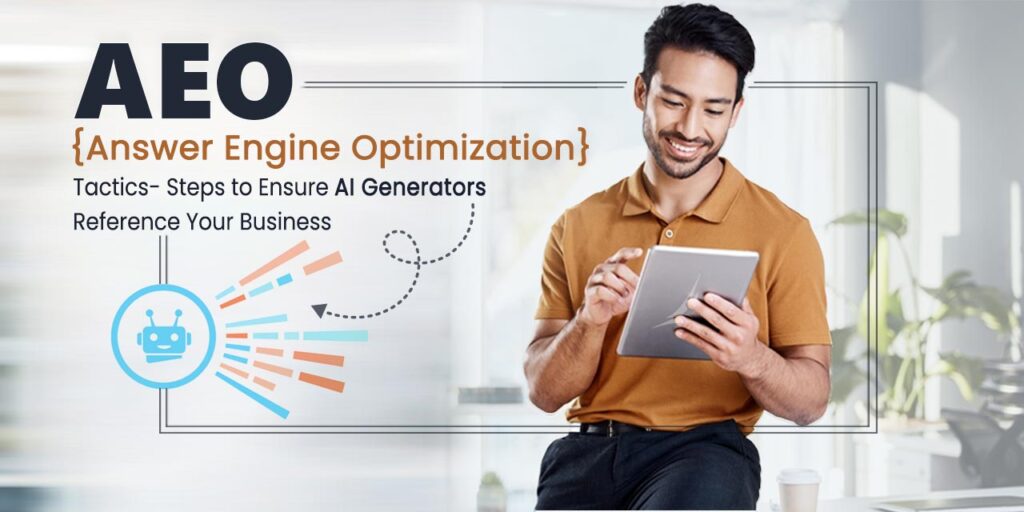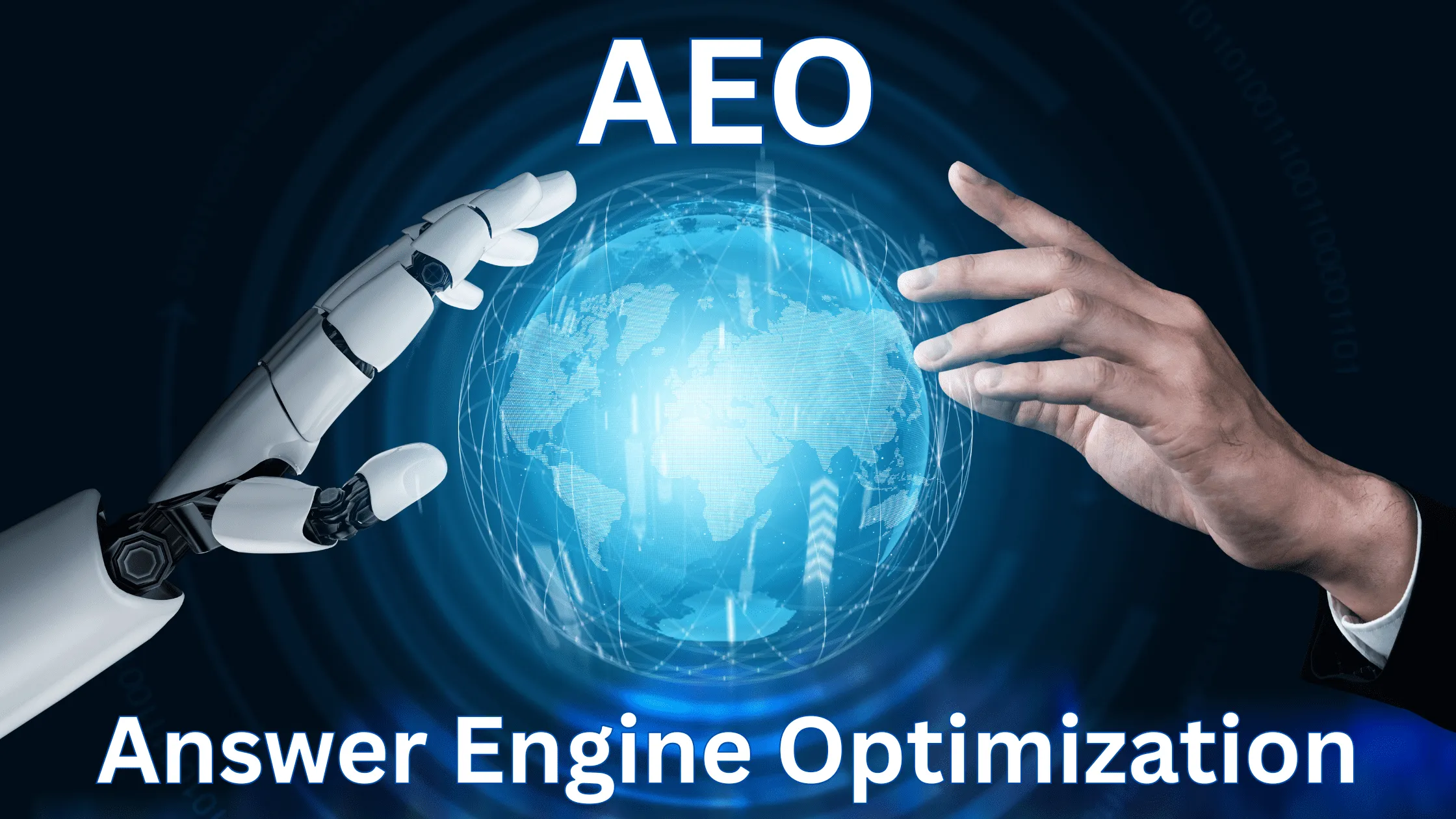What Is the Search Optimization Landscape in 2025?
In 2025, the world of search optimization has evolved into a complex system where traditional search engines exist alongside AI-powered answer platforms and generative AI systems. Brands now face competition for visibility across three distinct yet interconnected channels:
- Conventional search results
- Featured snippets and voice responses
- AI-generated conversational outputs
The Evolution of SEO
Traditional SEO (Search Engine Optimization), focused on improving website rankings through keywords, backlinks, and technical optimization, is no longer enough on its own. Understanding the difference between AEO and SEO agency is now essential as two new approaches have emerged.
AEO (Answer Engine Optimization) aims to optimize content for direct answers displayed in featured snippets, knowledge panels, and voice assistant responses. Meanwhile, GEO (Generative Engine Optimization) focuses on optimizing content specifically for AI platforms such as ChatGPT, Google’s AI Overviews, and other large language models.
These changes highlight a fundamental shift in how users search for information. Instead of clicking through multiple links to find what they need, people now expect immediate answers delivered directly to them. Voice searches, conversational queries, and AI chat interfaces have become the primary ways individuals discover information.
The Impact of AI on Search Engines
AI-driven search engines and platforms have revolutionized the way queries are processed. With advanced natural language understanding capabilities, contextual awareness, and the ability to gather information from various sources, these platforms can provide answers without requiring users to click on any links. This represents a significant disruption to the traffic-focused model that has been the foundation of traditional SEO for many years.
Adapting Strategies for Success
Brands that solely rely on outdated SEO tactics are at risk of becoming invisible in these new channels. To thrive in this evolving landscape, it is crucial for businesses to adopt a holistic approach that combines all three strategies:
- SEO: Continue optimizing websites for organic rankings.
- AEO: Focus on optimizing content for answer visibility in featured snippets and voice responses.
- GEO: Ensure presence on AI platforms through targeted optimization efforts.
By integrating these approaches into their overall search optimization strategy, brands can achieve comprehensive coverage across the entire search ecosystem and stay ahead of the competition.
How Does Traditional SEO Still Play a Role in Driving Organic Traffic?
Traditional SEO remains the backbone of digital visibility, focusing on improving website rankings in search engine results pages through proven methodologies. Despite the emergence of AI-driven alternatives, it continues to drive substantial organic traffic for businesses that master its core components.
The foundation of traditional SEO rests on four pillars:
- Keyword research: Identifying search terms users enter to find products, services, or information
- Content optimization: Creating valuable, relevant content aligned with target keywords and user needs
- Backlinks: Building authoritative external links that signal credibility to search engines
- Technical SEO: Ensuring site speed, mobile responsiveness, crawlability, and proper indexing
These elements work together to help websites rank higher in traditional search results, capturing users who prefer browsing multiple options before making decisions. Companies investing in technical SEO improvements see measurable gains in page load times and mobile user engagement, directly impacting their search rankings.
The landscape has shifted with AI-powered search engines delivering direct answers at the top of results pages. Zero-click searches now account for a significant portion of queries, where users receive immediate answers without visiting any website. This phenomenon challenges traditional SEO’s effectiveness, as high rankings no longer guarantee traffic when answers appear directly in search results. Websites must now compete not just for position, but for the actual click-through.
What Techniques Are Used in AEO to Optimize for Answer Engines and Voice Assistants?
Answer Engine Optimization shifts the focus from ranking on search results pages to becoming the direct answer users receive. AEO targets platforms like Google Assistant, Siri, and Alexa, where users expect immediate, spoken responses without browsing multiple websites.
The core of voice search optimization lies in understanding how people actually speak their queries. Voice searches tend to be longer and more conversational—”What’s the best Italian restaurant near me that’s open now?” versus typing “Italian restaurant near me.” Content must mirror this natural language pattern.
Key AEO Techniques:
- Question-and-answer formatting: structures content to match common queries directly. Creating dedicated FAQ sections or using H2/H3 headers as questions helps search engines identify relevant answers quickly.
- Semantic SEO: expands beyond exact-match keywords to include related terms, synonyms, and contextual phrases. Search engines now understand topic clusters and entity relationships, rewarding content that comprehensively covers a subject.
- Schema markup: serves as the technical backbone of AEO success. This structured data vocabulary tells search engines exactly what your content represents:
- FAQ schema highlights question-answer pairs
- HowTo schema breaks down step-by-step processes
- Speakable schema identifies sections optimized for text-to-speech
Implementing proper schema markup increases the likelihood of securing featured snippets—those coveted “position zero” results that voice assistants read aloud. Sites with structured data are 40% more likely to appear in voice search results.

How Does GEO Transform Content for Generative AI Platforms Like ChatGPT?
Generative Engine Optimization represents the latest frontier in search optimization, specifically targeting AI platforms like ChatGPT, Google’s AI Overviews, and Perplexity AI. Unlike traditional search engines that display ranked links, generative AI systems synthesize information from multiple sources to create comprehensive, conversational responses. GEO ensures your content becomes part of these AI-generated answers rather than being bypassed entirely.
The transformation centers on authoritative, well-cited content that AI models can confidently reference. Generative AI platforms prioritize sources demonstrating clear expertise and credibility. Content must include:
- Verifiable statistics and data with proper attribution
- Expert quotes and research citations from recognized authorities
- Clear source documentation that AI can validate and reference
- Conversational language patterns matching how users phrase complex queries
The structure differs fundamentally from traditional SEO content. Generative AI search favors natural, dialogue-style formatting over keyword-stuffed paragraphs. Your content should answer questions as a knowledgeable expert would in conversation—directly, thoroughly, and with supporting evidence.
E-E-A-T (Experience, Expertise, Authority, Trustworthiness) becomes non-negotiable in GEO. AI models actively assess content credibility before incorporating information into responses. Demonstrating first-hand experience, professional credentials, and transparent sourcing significantly increases your chances of being featured in AI-generated summaries and recommendations.
Why Is a Hybrid Approach Essential for Comprehensive Search Visibility?
Relying on a single optimization method leaves significant visibility gaps across the modern search ecosystem. A hybrid search optimization strategy integrates SEO, AEO, and GEO to capture audiences wherever they seek information—whether through traditional search engines, voice assistants, or AI chat interfaces. You may like to visit https://www.researchgate.net/publication/288770686_Hybrid_Search_Engine_Concept_and_Framework to get more about the concept and framework of hybrid search engine.
Each method serves distinct user touchpoints:
- SEO drives organic traffic from users actively browsing search results
- AEO captures attention in featured snippets and voice queries where users want immediate answers
- GEO ensures brand presence in AI-generated responses and conversational recommendations
Consider a user researching “best project management tools.” They might start with a Google search (SEO), ask Siri for quick comparisons (AEO), then consult ChatGPT for personalized recommendations (GEO). Brands optimizing for all three channels appear throughout this journey, building recognition and trust at multiple decision points.
This integrated approach addresses the fragmented nature of modern search behavior, where users seamlessly switch between platforms based on context and convenience. Check out more about Inside a Leading AEO Agency: How Generative Engines Rank and Cite Brands.
What Are the Common Elements Across All Modern Search Optimization Methods?
Despite their different objectives, SEO, AEO, and GEO share fundamental principles that form the backbone of effective search optimization.
1. Understanding User Intent
User intent understanding stands as the most critical common element—whether someone searches “best running shoes,” asks Alexa “what are the best running shoes for beginners,” or prompts ChatGPT for personalized footwear recommendations, the underlying need remains consistent. Successful optimization requires mapping content to transactional, informational, and conversational intent patterns.
2. Usage of Structured Data
Structured data usage represents the second universal pillar across all three methodologies. Schema markup acts as a translation layer that helps traditional search engines, answer engines, and generative AI platforms parse and categorize content accurately. A recipe marked up with proper schema can appear in Google’s recipe cards (SEO), be read aloud by voice assistants (AEO), and get referenced in AI-generated meal planning suggestions (GEO).
3. Importance of Quality Signals
Quality signals matter universally—fast loading speeds, mobile responsiveness, and authoritative citations strengthen performance across every platform. Content that demonstrates genuine expertise through detailed explanations, data-backed claims, and clear source attribution earns visibility whether it’s competing for SERP rankings, featured snippets, or inclusion in AI-generated responses.
These shared foundations mean optimizing for one methodology naturally reinforces the others.

How Should Brands Adapt Their Search Strategies in 2025?
Brands must abandon single-channel thinking and embrace an integrated optimization framework that combines SEO, AEO, and GEO simultaneously. The future of search optimization 2025 demands this multi-pronged approach to maintain visibility across traditional search engines, answer platforms, and generative AI systems.
Start by auditing existing content through three lenses:
- Does it rank in traditional SERPs?
- Can it be extracted as a direct answer?
- Will AI platforms cite it as authoritative?
This diagnostic reveals gaps in your current strategy.
Allocate resources proportionally based on where your audience searches. B2B brands may prioritize GEO for ChatGPT visibility, while local businesses need strong AEO for voice search dominance. E-commerce sites require robust traditional SEO for product discovery.
From SEO to AEO to GEO: The Evolution of Search Optimisation in 2025 isn’t about replacing old methods—it’s about layering new capabilities onto proven foundations. Brands that treat these as complementary rather than competitive will capture attention wherever their customers seek answers.

